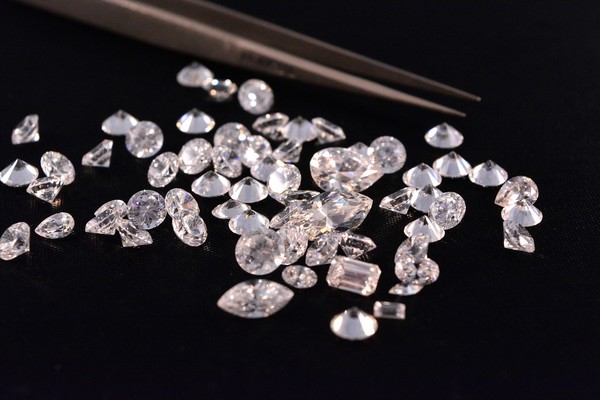Investing in diamonds may seem like a dazzling venture, but beyond the sparkle lies a world of financial potential. What makes diamonds so alluring as an investment? Let’s delve into the facets of diamond investment to uncover its hidden gems.
What Makes Diamonds a Valuable Investment?
Diamonds possess a timeless allure that transcends cultures and generations. Their inherent scarcity, durability, and beauty make them coveted assets. Unlike paper currency, which can lose value due to inflation or economic instability, diamonds hold intrinsic value. This inherent value provides a sense of security for investors seeking stable and tangible assets.
Historical Perspective on Diamond Investments
Throughout history, diamonds have symbolized wealth, status, and enduring love. From ancient civilizations to modern societies, diamonds have been treasured and traded as symbols of prosperity. The rich history of diamond investments highlights their enduring appeal as a store of value.
Different Types of Diamond Investments
Diamond investments come in various forms, catering to different investor preferences and risk profiles. Whether you prefer tangible assets like physical diamonds or the convenience of diamond ETFs and funds, there’s a suitable option for every investor.
Factors Influencing Diamond Investment
Before diving into diamond investment, 다이아몬드 투자, it’s essential to understand the factors that influence their market dynamics. From market trends to ethical considerations, several factors can impact the value and viability of diamond investments.
Market Trends and Demand
The diamond market is influenced by supply and demand dynamics, consumer preferences, and global economic conditions. Shifts in consumer tastes, such as the growing demand for ethically sourced diamonds, can influence market trends and investment opportunities.
Rarity and Quality of Diamonds
Not all diamonds are created equal. Factors such as carat weight, cut, clarity, and color determine a diamond’s rarity and value. Investors must assess the quality of diamonds before making investment decisions to ensure they acquire assets with growth potential.
Economic Stability and Inflation
Diamonds are often viewed as a hedge against economic instability and inflation. During times of economic uncertainty, investors may flock to tangible assets like diamonds to preserve their wealth and purchasing power.
Environmental and Ethical Considerations
In recent years, environmental and ethical concerns surrounding diamond mining have prompted investors to seek responsibly sourced diamonds. Ethical considerations, such as labor practices and environmental impact, play a significant role in shaping consumer preferences and investment trends.
Pros and Cons of Diamond Investment
Like any investment, diamond investment comes with its own set of advantages and disadvantages. Understanding these pros and cons is essential for making informed investment decisions.
Advantages of Investing in Diamonds
- Tangible Asset: Diamonds offer tangible value and can serve as a physical store of wealth.
- Portfolio Diversification: Diamonds provide diversification benefits, reducing overall investment risk.
- Long-Term Value: High-quality diamonds have historically appreciated in value over time, offering potential long-term returns.
Potential Risks and Challenges
- Illiquid Asset: Unlike stocks or bonds, diamonds can be challenging to sell quickly, leading to liquidity issues.
- Market Volatility: The diamond market can experience price fluctuations due to changes in supply and demand dynamics.
- Quality Assessment: Evaluating the quality and authenticity of diamonds requires expertise and due diligence, posing a challenge for novice investors.
Comparing Diamonds with Other Investment Assets
When comparing diamonds with other investment assets such as gold, lab grown diamonds, real estate, or stocks, it’s essential to consider factors such as liquidity, volatility, and correlation with broader market trends.
Long-Term vs. Short-Term Investment Strategies
Investors can adopt different investment strategies based on their financial goals and risk tolerance. While some investors may opt for long-term diamond investments as a hedge against inflation, others may pursue short-term trading opportunities to capitalize on market trends.
How to Invest in Diamonds
Now that we’ve explored the fundamentals of diamond investment, let’s discuss practical strategies for investing in diamonds.
Buying Physical Diamonds
One of the most straightforward ways to invest in diamonds is to purchase physical stones from reputable dealers or auction houses. When buying physical diamonds, it’s crucial to verify their authenticity and quality through certification and independent appraisal.
Investing in Diamond ETFs and Funds
For investors seeking exposure to the diamond market without owning physical stones, diamond exchange-traded funds (ETFs) and mutual funds offer an alternative. These investment vehicles pool investors’ money to invest in diversified portfolios of diamond-related assets, providing liquidity and diversification benefits.
Diamond Mining Stocks and Companies
Another avenue for diamond investment is through investing in diamond mining stocks or companies. By purchasing shares of publicly traded diamond mining companies, investors can gain exposure to the diamond supply chain and benefit from potential growth opportunities in the industry.
Working with Diamond Investment Advisors
Navigating the intricacies of diamond investment requires expertise and market insights. Working with experienced diamond investment advisors or consultants can help investors make informed decisions and optimize their investment strategies.
Tips for Successful Diamond Investment
To maximize the potential returns of diamond investment, consider the following tips:
Educate Yourself About Diamonds
Take the time to learn about the 4Cs of diamonds—carat, cut, clarity, and color—and how these factors influence diamond quality and value. Educating yourself about diamonds will empower you to make informed investment decisions.
Diversify Your Investment Portfolio
Avoid putting all your eggs in one basket by diversifying your investment portfolio across different asset classes, including stocks, bonds, real estate, and precious metals. Diamond investment should complement your overall investment strategy and risk management approach.
Stay Updated on Market Trends
Keep abreast of market trends, industry developments, and regulatory changes that may impact the diamond market. Staying informed will enable you to identify investment opportunities and adjust your strategy accordingly.
Consider Professional Guidance and Due Diligence
Seek guidance from qualified diamond investment advisors or consultants who can provide personalized recommendations based on your investment goals and risk tolerance. Conduct thorough due diligence before making any investment decisions to mitigate risks and maximize returns.

